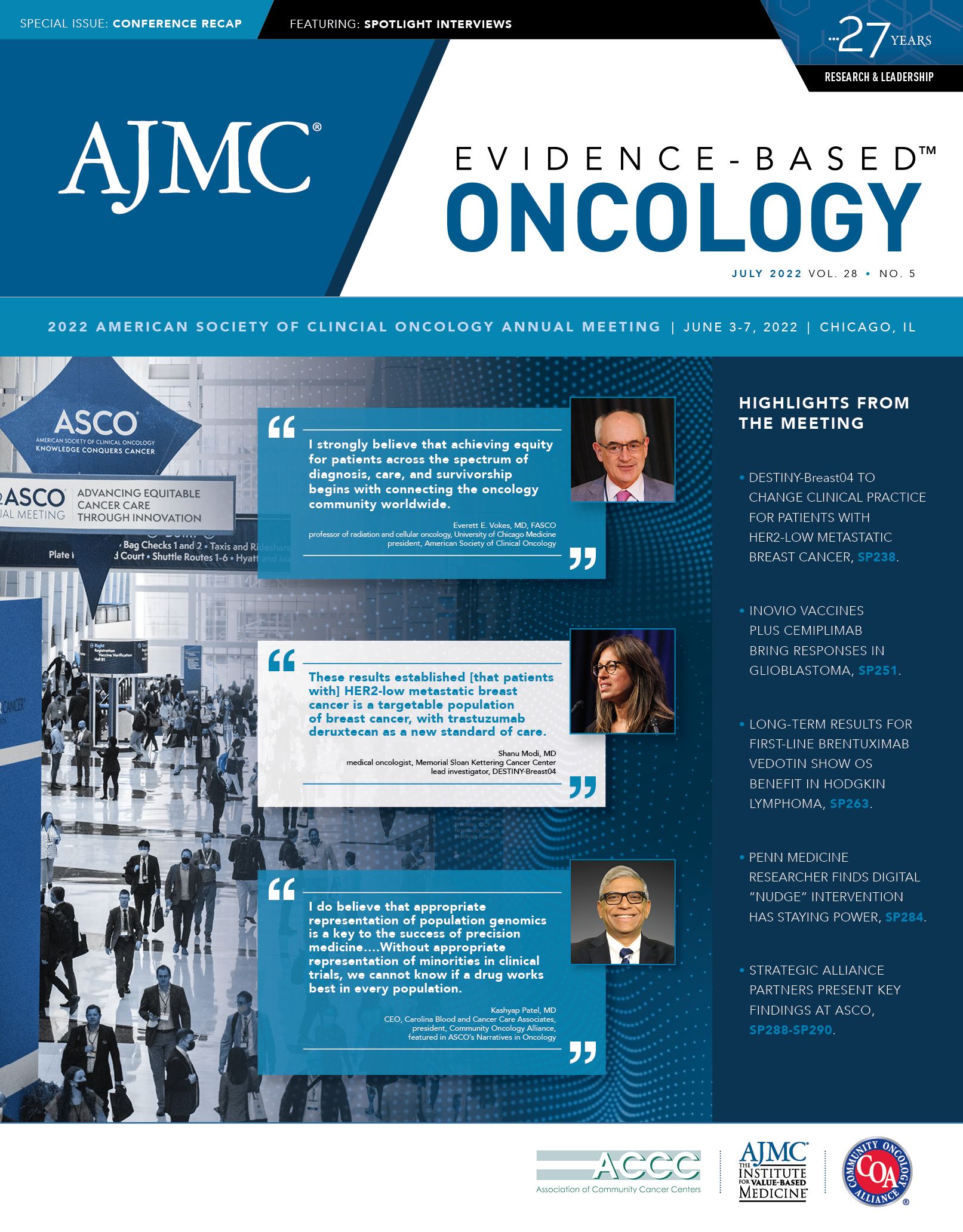- Center on Health Equity & Access
- Clinical
- Health Care Cost
- Health Care Delivery
- Insurance
- Policy
- Technology
- Value-Based Care
Data Indicate Lower Response Rates to Axi-cel Among Black Patients
Compared with White patients, Black patients who received axicabtagene ciloleucel (axi-cel) to treat large B-cell lymphoma had lower response rates to the chimeric antigen receptor (CAR) T-cell therapy. The review of real-world data was presented during the 2022 American Society of Clinical Oncology (ASCO) Annual Meeting.
Frederick L. Locke, MD, vice chair of the Department of Blood and Marrow Transplant and Cellular Immunotherapy and program coleader of immuno-oncology at Moffitt Cancer Center in Tampa, Florida, said the data from 1389 patients help fill in gaps in understanding how patients from different racial and ethnic groups respond to axi-cel (Yescarta). Data were gathered in a postapproval safety study among patients treated between October 2017 and August 2020, with a data cutoff of June 22, 2021. The median follow-up was 12.7 months. Outcomes were overall response rate (ORR), complete response (CR) rate, duration of response (DOR), progression free survival (PFS), and overall survival (OS) at 12 months; grade 3 or greater cytokine release syndrome (CRS); and immune effector cell-associated neurotoxicity syndrome (ICANS).
In this group, 1127 patients were White (81%), 70 were Black (5%), 81 were Asian (6%), and 152 (11%) were Hispanic, which included 104 White Hispanic, 2 Black Hispanic, and 1 Asian Hispanic patients. Black patients were younger than White patients, had a median age of 55.5 years vs 62.8 years, and were more likely to have pulmonary impairment (41% vs 28%). Hispanic patients were younger than non-Hispanic patients (58.5 vs 62.6 years).
Black patients also had a longer time between diagnosis and treatment; 71% had a wait time of at least 12 months compared with 59% of White patients.
Response rates were as follows:
- White patients: ORR 74%, with CR 57%, PFS 48%, and OS 63%
- Black patients: ORR 57%, with CR 45%, PFS 36%, and OS 62%
- Asian patients: ORR 67%, with CR 53%, PFS 55%, and OS 65%
- Hispanic patients: ORR 73%, with CR 55%, PFS 50%, and OS 65%
In addition, Hispanic patients had lower rates of grade 3 or higher CRS (4%) and ICANS (15%) than non-Hispanic patients (9% and 27%, respectively).
The ORR of Black patients was inferior to that of White patients (odds ratio [OR], 0.40; 95% CI, 0.24-0.69), as was the CR (OR, 0.55; 95% CI, 0.32-0.93). However, no statistical differences were found in PFS or OS across races. Locke elaborated further during the session.
“No differences in efficacy outcomes were observed among patients who were Hispanic or Latino and those who were not Hispanic or Latino,” he said. “Asian patients appeared to have a favorable duration of response compared with White and Black or African American patients. Lastly, a lower response rate observed among Black or African American patients compared [with] White patients warrants further investigation into additional factors that may account for this difference, such as high disease burden, different disease biology, and importantly, different access to care.”
Reference
Locke FL, Siddiqi T, Jacobson CA, et al. Real-world outcomes of axicabtagene ciloleucel (axi-cel) for the treatment of large B-cell lymphoma (LBCL) by race and ethnicity. J Clin Oncol. 2022;40(suppl 16):7571. doi:10.1200/JCO.2022.40.16_suppl.7571

Integrated Care for Chronic Conditions: A Randomized Care Management Trial
December 3rd 2025The authors sought to understand the differential impact of payer-led community-based care management approaches on stakeholder-oriented outcomes for publicly insured adults with multiple chronic conditions.
Read More
Managed Care Reflections: A Q&A With A. Mark Fendrick, MD, and Michael E. Chernew, PhD
December 2nd 2025To mark the 30th anniversary of The American Journal of Managed Care (AJMC), each issue in 2025 includes a special feature: reflections from a thought leader on what has changed—and what has not—over the past 3 decades and what’s next for managed care. The December issue features a conversation with AJMC Co–Editors in Chief A. Mark Fendrick, MD, director of the Center for Value-Based Insurance Design and a professor at the University of Michigan in Ann Arbor; and Michael E. Chernew, PhD, the Leonard D. Schaeffer Professor of Health Care Policy and the director of the Healthcare Markets and Regulation Lab at Harvard Medical School in Boston, Massachusetts.
Read More
